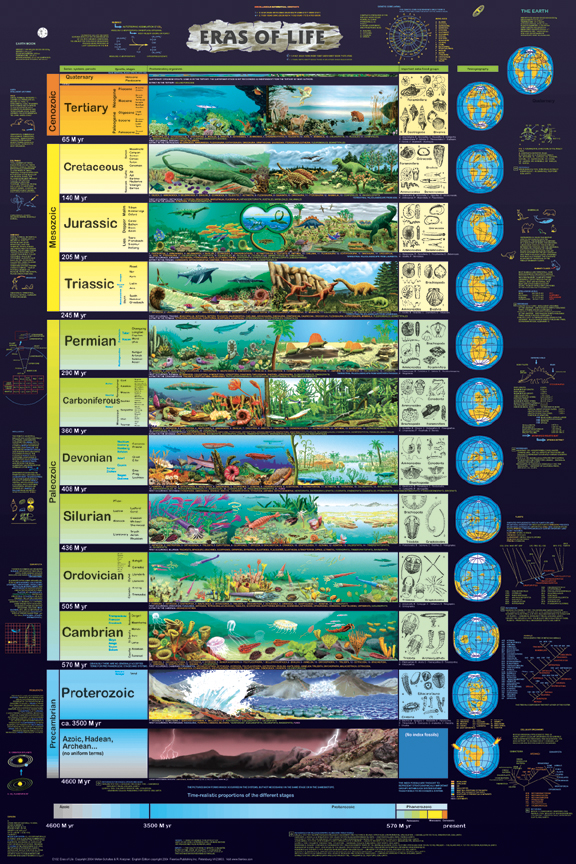To understand the origins of the dinosaurs, it is necessary to understand some of the basic principles of evolution..Geologists have divided Earth's history into an international standard, which was set up from 1820-1870, and it is constantly being refined and improved. These geological time divisions are based on studies of the sequence of fossils through time, and on exact radiometric dating in millions of years.
Dinosaurs are found the period of Earth's history known as the Mesozoic Era, which began 250 million years ago and ended 65 million years ago. The Mesozoic is further subdivided into three periods, the Triassic, Jurassic, and Cretaceous. Fossils show that the dinosaurs originated during the mid to Late Triassic, perhaps 230-235 million years ago, and they remained the dominant land animals for another 160 million years, until they died out at the end of the Cretaceous.
For a long time it was mistakenly thought that evolution was a simple linear progression, with humankind at the top of the ladder. This old view was replaced long ago as new evidence came to light. We now understand that evolution proceeds in a kind of branching pattern, with species on one branch giving rise to other branches and so on. The era's of life is given below :

Evolution proceeds as changes (mutations) occur in the genetic code of an organism. These mutations are 'tested' by the environment in which the organism exists. Many (most) of the changes will be harmful to the organism, and it will die before the harmful genes are passed on to its offspring. Occasionally, however, a gene combination will arise the actually improves the adaptation of the organism to its' particular environment and these genes are more likely to be passed on. By this process, called 'natural selection', all life has branched. The process of natural selection is the means by which the great diversity of dinosaurs was able to evolve.To reconstruct the evolutionary history of a related group of animals, such as the dinosaurs, it is necessary to look at the detailed shape of the bones. Not all dinosaurs are completely different. Some share certain similarities in their bone structure. By finding out what dinosaurs share these similarities, or 'characters', it is possible to produce an evolutionary tree, or phylogeny, showing the relationships of the animals to their ancestors.